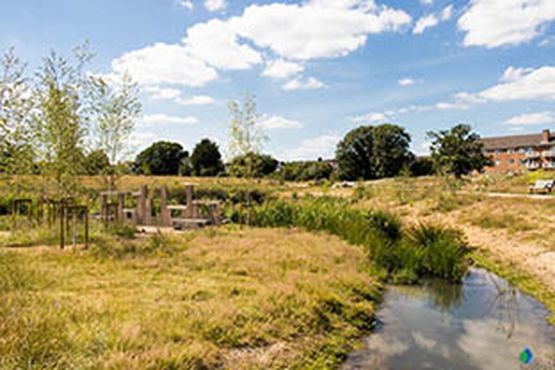
100,000 homes in Hull and the East Riding are at risk of flooding.
Living With Water was created to help protect our area by building understanding about the threats and opportunities water brings.
Our Blue-Green Vision involves exploring opportunities to manage water effectively for the future of Hull and the East Riding. Our ambition is to invest in schemes to increase flood resilience across our region.
In Hull and the East Riding, several sustainable drainage systems (SuDS) projects are being planned to help manage the area’s flood risk.
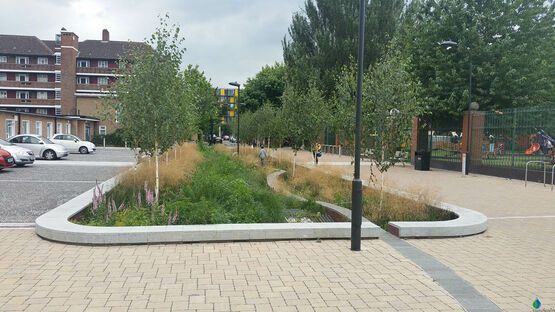
How do SuDS work?
SuDS help to manage surface water caused by rainfall by acting in a similar way to natural water processes.
When it rains heavily, water runs off hard surfaces, such as buildings, roads and pavements, and into drainage and sewer systems, which are sometimes not large enough to cope with this additional influx.
SuDS slow the water flow and channel it away from drains and sewers. As well as managing flood risk, SuDS also help reduce pollution and enhance biodiversity.
What are the types of SuDS?
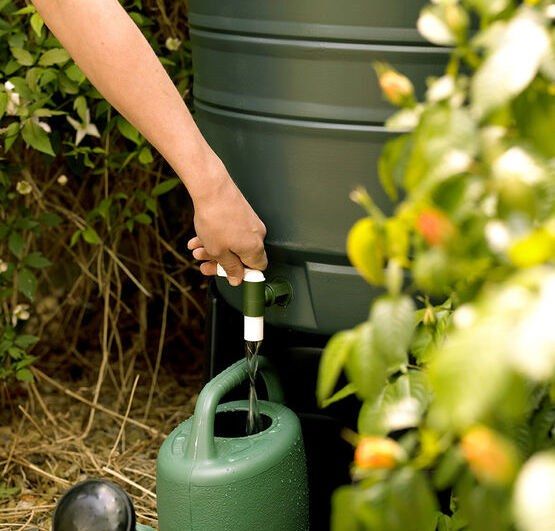
Examples include:
- Water butts.
- Rain gardens.
- Wet woodlands.
- Permeable paving.
- Green roofs.
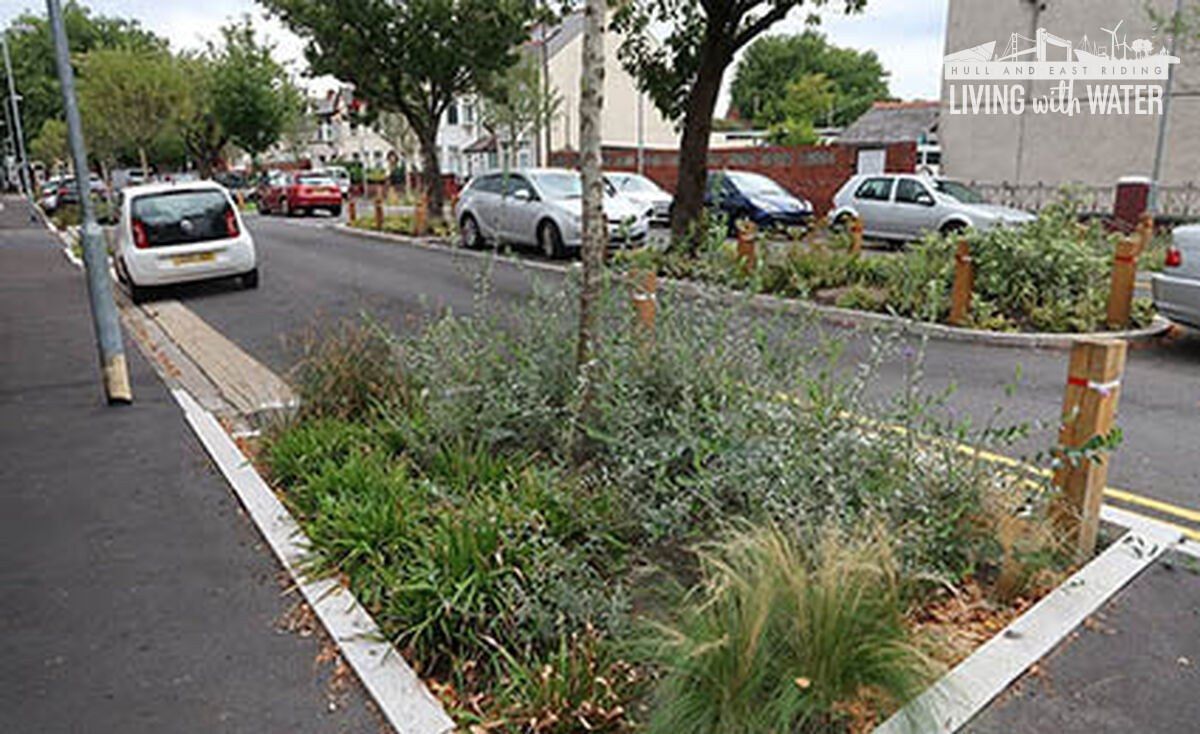
FAQs about SuDS
Where will these SuDS be?
We are currently carrying out surveys at a number of sites across Hull and the East Riding to determine if SuDS can be installed.
This will involve talking to residents and visiting your area to find out what you’d like to see in your community.
We’ll keep you informed every step of the way on our Blue-Green Vision progress.
Do SuDS take up much space?
No, they don't need to. Often the need for higher density developments and the land take required for some SuDS components can be considered a challenge and a barrier to the use of SuDS. With creativity and careful planning this can be overcome and great places and spaces can be delivered.
For new developments there may be a planning requirement to incorporate public open space and car parking, providing an ideal opportunity to simultaneously integrate SuDS and offer multifunctional benefits. When planning sustainable drainage in high density developments both innovative design and specific SuDS components are fundamental to success, and can include a range of soft and hard components depending on the opportunities and constraints of a site.
Green roofs and rainwater harvesting allow rainwater to be controlled as close to source as possible, attenuating the flow of runoff and providing other benefits.
Permeable paving or other permeable surfaces can replace standard impermeable tarmac to reduce the amount of runoff generated by a development (as well as obviously providing a road surface or car parking).
In some cases, depending on ground conditions, infiltration components can help provide SuDS in high density areas. Bioretention facilities (underdrained landscaped areas) offer good opportunities for water quality improvements, storage, and for amenity. For example, bioretention areas could be used as landscaped features in car parks, and in areas where green space would be required anyway.
Traffic calming, street scenes and home zones can incorporate SuDS, eg using rain gardens, to remove road gulleys, and runoff into the sewerage system, by intercepting highway runoff at source and controlling discharge into the underlying ground.
Examples of this system have been successfully included in Portland, Oregon, where roadside rain gardens are planted with native species to reduce the width of the road (and the speed of vehicles) and remove runoff from the drainage network.
Do SuDS take up much space?
No, they don't need to. Often the need for higher density developments and the land take required for some SuDS components can be considered a challenge and a barrier to the use of SuDS. With creativity and careful planning this can be overcome and great places and spaces can be delivered.
For new developments there may be a planning requirement to incorporate public open space and car parking, providing an ideal opportunity to simultaneously integrate SuDS and offer multifunctional benefits. When planning sustainable drainage in high density developments both innovative design and specific SuDS components are fundamental to success, and can include a range of soft and hard components depending on the opportunities and constraints of a site.
Green roofs and rainwater harvesting allow rainwater to be controlled as close to source as possible, attenuating the flow of runoff and providing other benefits.
Permeable paving or other permeable surfaces can replace standard impermeable tarmac to reduce the amount of runoff generated by a development (as well as obviously providing a road surface or car parking).
In some cases, depending on ground conditions, infiltration components can help provide SuDS in high density areas. Bioretention facilities (underdrained landscaped areas) offer good opportunities for water quality improvements, storage, and for amenity. For example, bioretention areas could be used as landscaped features in car parks, and in areas where green space would be required anyway.
Traffic calming, street scenes and home zones can incorporate SuDS, eg using rain gardens, to remove road gulleys, and runoff into the sewerage system, by intercepting highway runoff at source and controlling discharge into the underlying ground.
Examples of this system have been successfully included in Portland, Oregon, where roadside rain gardens are planted with native species to reduce the width of the road (and the speed of vehicles) and remove runoff from the drainage network.
Are SuDS safe?
Yes, well designed schemes and components are safe.
There are many ways to reduce the chances of accidents in and around sustainable drainage schemes. With appropriate design these risks can be minimised particularly if components are visible and successfully integrated into the public realm. It is recommended that open water components incorporate barrier planting (usually densely planted marginal vegetation and/or thorny plants to restrict access) and gently inclined side slopes.
Options include the design of banks for ponds and swales with a maximum of a 1 in 3 slope and the depths of ponds and wetlands should be kept to a minimum, with the maximum depth of water being located away from the edges. Often, information signs are used demonstrating the benefits of sustainable drainage.
Educating the public how the SuDS scheme works and the potential risks is a vital part of involving the community.
Do SuDS pose a greater risk of groundwater contamination?
No, if designed appropriately. SuDS should not increase groundwater contamination risks if designed appropriately for the site.
All drainage systems have to be designed for exceedance so they are safe when overloaded. Certain measures can be taken to protect more sensitive areas by considerably reducing or prohibiting infiltration.
In marginal areas, where polluted water may have an impact on the groundwater, the runoff can pass through one or more treatment stages, depending on the possible level of pollution and the hydro-geological conditions.
If all infiltration was prohibited it is likely that a SuDS scheme would still represent an improvement over a traditional system drained using pipes. The SuDS scheme could still attenuate flow from the site and improve the surface water runoff quality.
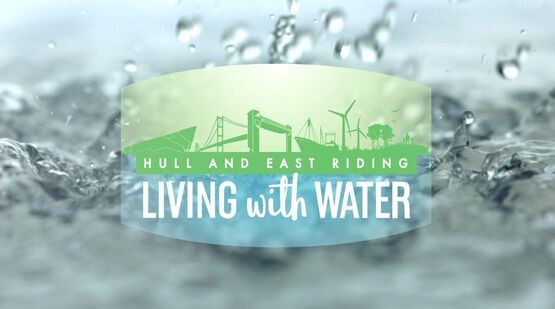
Have your say
A key element of the project is to work with you to understand your thoughts and ideas about SuDS in your community.
We’d love to hear from you!
- Drop us an email at enquiries@livingwithwater.co.uk
- Engage with us on Facebook and Twitter





